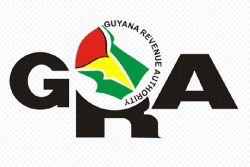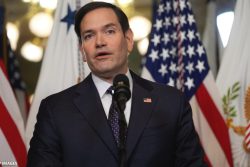The PPP/C government yesterday tabled a bill in the National Assembly for a huge increase in the annual extraction of oil revenues from the Natural Resource Fund (NRF).
This move had been announced by Finance Minister Dr Ashni Singh in his budget presentation on January 15th and the government yesterday tabled the bill that will accomplish that. It is titled the Fiscal Enactments (Amendment) Bill 2024.
Under the new proposed extraction formula, the government is proposing to draw down 100% of the first US$1b of deposits paid into the fund in the immediately preceding fiscal year.
According to the NRF legislation controversially passed on December 29, 2021, 100% of the first US$500m paid into the fund in the immediately preceding fiscal year can be withdrawn.
For every additional tranche, the government will increase the take. For the second US$1b paid into the fund in the immediately preceding fiscal year, the government is proposing to extract 95%. The extant legislation, by contrast, allows the extraction of 75% of the second US$500m.
The new bill tabled yesterday proposes to take 90% of the third US$1b of deposits into the fund in the immediately preceding year. The current law extracts only 50% of the third US$500m.
The new bill envisages taking 85% of the fourth US$1b deposited compared to the current law which allows the taking of 25% of the fourth US$500m.
This new formula tabled yesterday is clearly aiming at higher revenues when the fourth and fifth oil platforms become operational. If approved the bill will sharply decrease intergenerational savings.
The 2021 bill had sparked an uproar in the House after the government aimed to force it through Parliament on December 29 2021. It led to the infamous removal of the Speaker’s mace and subsequent disciplining of opposition MPs for their misbehaviour.
Even with the current level of extraction, several international agencies have expressed misgivings about the use of the NRF.
In December last year, while it noted that the economy has tripled in size since the start of oil production, fundamentals remain sound and there are no signs of inflationary pressures, the IMF had advised the government to establish a precautionary stabilization fund in the medium to long term as a hedge against shocks.
The recommendation contained in one of the annexes to its recent country report following its Article IV Consultation with Guyana earlier this year will be seen as a criticism of the manner in which the current NRF has been structured.
This recommendation came just days after the Inter-American Development Bank’s (IDB) 2023 to 2026 country strategy for Guyana raised doubts about the frontloading of proceeds from the NRF.
Stating that fiscal policy can play a critical role in ensuring that Guyana’s oil wealth is managed effectively and equitably, the IMF country report said that issues of long-term fiscal and debt sustainability, while not of pressing concern, cannot be ignored as oil is an exhaustible resource.
It asserted that favourable debt dynamics signal that issues of overheating, absorptive and institutional capacity constraints, and inflationary and real exchange rate pressures are likely to be more pressing policy challenges over the near- and medium-term. It pointed out that savings accumulated in the NRF, consistent with a zero overall fiscal balance by 2028 and thereafter, are projected to rise substantially to around 36.5 percent of GDP by 2028.
“These considerations, together with the limitations of the current fiscal policy practices and practical challenges involved in calibrating a floor for the non-resource primary balance, usually recommended in resource rich countries, suggest adoption of a comprehensive fiscal policy framework that guides spending decisions based on a medium-term fiscal framework (MTFF) and updated public financial management (PFM) and public investment management frameworks”, the country report said.
This, it said, should be combined with an effective medium-term fiscal anchor, which staff suggests to be zero overall fiscal balance by 2028 following a transition path with higher public spending to meet urgent human capital and physical infrastructure needs.
It said that the authorities are encouraged to carry out an in-depth analysis, by an independent consultant, of existing absorptive and institutional capacity constraints on scaling up of public spending. This, it said, could be a crucial input in the setting of expenditure limits in the context of the MTFF.
It pointed out that fiscal policy in resource rich countries usually has to balance competing, policy objectives. It said that fiscal policy has a vital role to play, to (i) promote and maintain macroeconomic stability, (ii) protect the sustainability of public finances,(iii) ensure an equitable intertemporal distribution of oil wealth across generations, and (iv) meet the economy’s infrastructure and human capital needs while cognisant of absorptive and institutional capacity constraints.
The IDB country strategy for 2023 to 2026 had pointed out that the risk of macroeconomic imbalances from an overvaluation of the real exchange rate is mitigated by the existence of the NRF.
“However, the recent amendment to the NRF in 2020 frontloads transfers from the NRF to the budget, which reduces its mitigation effect. Significantly higher government spending levels could contribute to higher inflation and real exchange rate appreciation. Macroeconomic risks will be mitigated and monitored by close supervision of economic performance and policies to continue supporting corrective measures”, the strategy said.
The opposition has already signalled that it will not support expanded extractions from the NRF.









